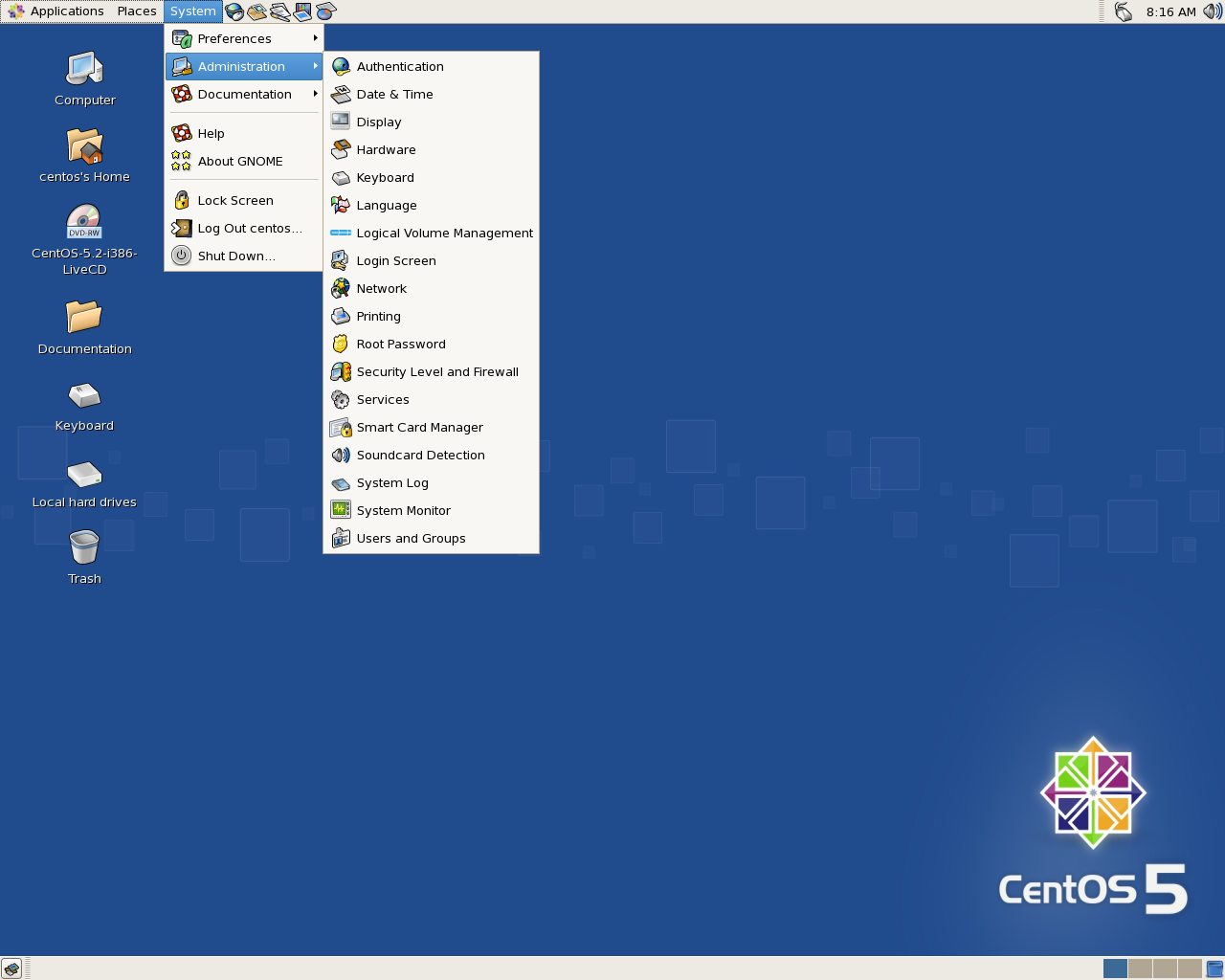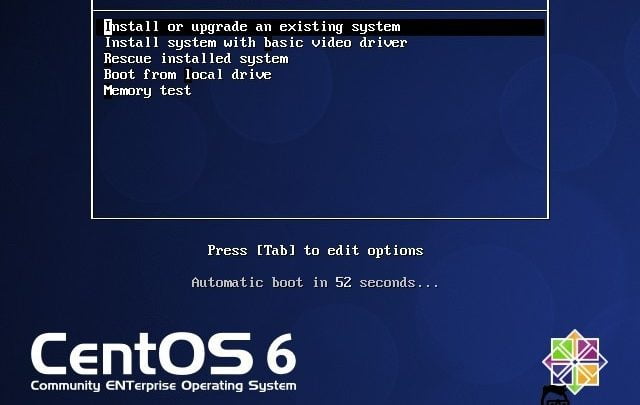CentOS is a Community ENTerprise Operating System and it is a Linux distribution based on Red Hat Enterprise Linux (RHEL). If you’re looking for fresh CentOS 6.5 installation, then download the.iso images from the links provided below, burn the ISO to a CD and boot it and follow the installation instructions with screenshots mentioned below.
Download the CentOS 6.5 minimal operating system to a workstation by clicking here and navigating to the USA HTTP Link 6.5 ios x8664 CentOS-6.5-x8664-minimal.iso. After the download completes, open a console to the VM and select the (disk) icon and select Connect to ISO on Local Disk. Browse to the CentOS 6.5 ISO and click open. DVD and NetInstall x8664 images are available on mirrors. RPMs: CentOS: CentOS RHEL: 31 May 2029: 7: 8 (2003) DVD, Minimal, Everything, LiveGNOME, LiveKDE and NetInstall x8664 images are available on mirrors. RPMs: CentOS: CentOS RHEL: 30 June 2024.
I wrote a new tutorial for CentOS 7, you can find it here:
1. Requirements
To install a CentOS server you will need the following:
Download the CentOS 6.5 DVD 1 from a mirror next to you.The list of mirrors can be found here:
For a basic installation you only need to download DVD 1 image filenamed CentOS-6.5-x86_64-bin-DVD1.iso.
There are also images for a minimal installation, network installationand a Live CD/DVD version.
2. Preliminary Note
Before to start I just want to warn you that this is a practical guidewithout any warranty, it was written with the purpose to help systemadministrators, so I won't explain technical details neither the theorybehind of them.
For the purpose of this tutorial I created a Virtual Machine with VirtualBox,this means that your hardware it might differs significantly, includingthe hard disk drives and the network cards.
In this tutorial I will use the hostname server.example.comwith the IP address 192.168.0.100 and the gateway 192.168.0.1, alsothese settings might differ for you, so you have to replace themwhere appropriate.
3. Install the Operating System
Boot from the first CentOS 6.5 DVD 1 and selectInstall or upgrade an existing system
I usually skip the installation media test, if it’s broken it’ll let me know anyway.
When the welcome screen of the CentOS installer appears, just click on Next
Centos 6.5 X86_64 Minimal Iso Download Iso
Choose your language.
Select your keyboard layout.
With this virtual machine I selected Basic Storage Devices, if you areusing SANs then select Specialized Storage Devices here.
Let's do a fresh installation.
Enter the hostname of the server, then click on the Configure Network button to assign a static IP address.
In the Wired tab, select the network interface and click on Edit.
Mark the Connect automatically checkbox.
In the IPv4 Settings tab select Manual in the Method drop-down menu.
Then click on the Add button next to the Addresses area to set astatic IP address.
Finally insert your DNS servers numbers separated by commas.

When you have finished with the network settings click on Apply, then Close and Next buttons.
Choose your time zone.
Enter a password for the root user.
Now it's time to do the hard drive partitioning.
As this is an empty virtual machine I choose Use All Space for simplicity, but this not a good option if you have some other operating system installed on it, in that case you might want to use Create Custom Layout.
I like to see how the hard drive is partitioned so I checked Review and modify partitioning layou.
and this is how the installer partitioned the hard drive, as you can seeit creates an LVM volume.
When you're done with the partitioning click on Write changes to disk
Select where to install the boot loader.
Now you can choose a set of software to be installed.
In my case I selected Basic Server, actually CentOS and Red Hat's descriptionof software contained in each set is a little bit vague, here a couple of linksthat may help you to choose the best one for you:
In the previous screen I also checked Customize now so I could add support for the Spanish language.
The installation of software packages start and it will takes fewminutes.
When the installation is complete, you can remove your DVD from the computer and reboot it.
After the reboot, log in to the server as root user.
That's it! Now you have a basic CentOS 6.5 server installed.
Danilo
Last updated: December 1st, 2013
Contents
- How to help and get help

1. Translations
Translations of these release notes are available for the following languages :
Deutsch (de) - Christoph Galuschka
简体中文 (zh-cn) - Timothy Lee
繁體中文 (zh-tw) - Timothy Lee
2. Introduction
The CentOS Development team is pleased to announce the availability of the CentOS MinimalCD 6.5 for both i386 and x86_64 architectures. These disks are based on our CentOS-6.5 i386 and x86_64 distributions.
The aim of this disk is to install a CentOS 6.5 system which has a minimum of packages needed to have a functional system, with no compromise regarding security and fully network and yum aware. It also includes support for the storage systems available in CentOS 6.5 (Adaptec, Brocade, QLogic, iSCSI and FCOE). Support for wireless devices is also included but installed only when needed.
Unlike the previous versions (up to CentOS 6.3) the set of installed packages is now almost identical to the one installed when choosing the group named 'Minimal' from the full DVD image.
You can get the CentOS MinimalCD 6.5 from the CentOS mirrors:
32-bit

i386: http://isoredirect.centos.org/centos/6/isos/i386/
- Filename: CentOS-6.5-i386-minimal.iso
- sha1sum: 4f900bba81d0e3c5cc5354a94984ed2fa03d4061
64-bit
Centos 6.5 X86_64 Minimal Iso Download 32-bit
x86_64: http://isoredirect.centos.org/centos/6/isos/x86_64/
- Filename: CentOS-6.5-x86_64-minimal.iso
- sha1sum: f21a71e8e31df73297bdd1ccd4a64a36831284bd
3. Most Important Packages and Applications
almost all firmware | acl | attr | audit | binutils | checkpolicy | chkconfig | coreutils | cronie & related |
curl | bridge-utils | db4-utils | device-mapper | dhclient | diffutils | dracut | e2fsprogs | efibootmgr |
ethtool | findutils | fipscheck | gpgme | iproute | iptables | iputils | logrotate | lvm2 |
mdadm | mingetty | ncurses | net-tools | nfs-utils | nss-util | openssh-clients | openssh-server | postfix |
python | rsyslog | selinux-policy-targeted | sudo | util-linux-ng | vi | yum |
4. Features
- SELinux aware (targeted policy only)
- IPv6 aware
- Except for selection of packages (this step is automatically skipped), installation is identical to the CentOS 6.5 DVD.
- Once installed the system can be used as DHCP and NFS client
- Support for delta rpms
- Support for custom acl
- Any application from a yum repository compatible with CentOS 6.5 can be added after the system is installed.
- The CD can be used for memory testing (at boot time only).
5. Known Issues
Just like the CentOS 6.5 DVD the text installer has limited capabilities compared to the GUI installer.
If installing as a virtual machine in VMWare, do not allow the 'New Virtual Machine Wizard' to use the 'Easy Install' (also known as 'autoinstall') feature. It includes several incorrect defaults which create problems after the installation is finished. As a workaround, do the following at the Guest Operating System Installation step instead of choosing Installer disk image file (ISO):
select I will install the operating system later.
advance to Ready to Create Virtual Machine and select Customize Hardware
select the New CD/DVD (IDE) entry from the list of hardware devices
under the Connection field select Use ISO image and browse to your local copy of the minimalCD.iso
If you did not configure the network during installation (see CentOS-6 FAQ#2) then:
- make sure that the interface is activated at boot time (set the ONBOOT parameter in the interface configuration file to 'yes').
if you are not using DHCP, you will have to manually configure your network interfaces because NetworkManager is not included. Documentation is here. Do not forget about DNS and default route.
vconfig has been removed from this image because its functionality has been superseded by the iproute2 package (ip link add $DEVICE type vlan).
6. How to help and get help
As a CentOS user there are various ways you can help out with the CentOS community. Take a look at our Contribute page for further information on how to get involved.
6.1. Special Interest Groups
CentOS consists of different Special Interest Groups (SIGs) that bring together people with similar interests. The following SIGs already exist:
Artwork - create and improve artwork for CentOS releases and promotion
Promotion - help promoting CentOS online or at events
Virtualization - unite people around virtualization in CentOS
And we encourage people to join any of these SIGs or start up a new SIG, e.g.
- Alpha, S390, Sparc and PPC port - help with porting CentOS to other architectures
- Hardware compatibility - provide feedback about specific hardware
- RPM Packaging - contribute new useful RPM packages
- Translation - help translating the documentation, website and Wiki content
6.2. Mailinglists and Fora
Another way you can help others in the community is by actively helping and resolving problems that users come up against in the mailing lists and the fora.
6.3. Wiki and Website
Even as an inexperienced CentOS user we can use your help. Because we like to know what problems you encountered, if you had problems finding specific information, how you would improve documentation so it becomes more accessible. This kind of feedback is as valuable to others as it would have been to you so your involvement is required to make CentOS better.
So if you want to help out and improve our documentation and Wiki, register on the Wiki or subscribe to the centos-docs mailing list.
7. Further Reading
The following websites contain large amounts of information to help people with their CentOS systems :
Upstream release notes and documentation : https://access.redhat.com/documentation/en-US/Red_Hat_Enterprise_Linux/6/html/6.5_Release_Notes/index.html
http://www.centos.org/
http://wiki.centos.org/
http://lists.centos.org/
CentOS-6 fora
http://bugs.centos.org/
http://planet.centos.org/
http://mirrors.kernel.org/redhat/redhat/linux/enterprise/6Client/en/os/SRPMS/
http://mirrors.kernel.org/redhat/redhat/linux/enterprise/6Server/en/os/SRPMS/
8. Thanks
We thank everyone involved for helping us produce this product and would like to specifically acknowledge the extra effort made by the QA Team. Without them working almost 24/7 we couldn't have released this as fast as we did.
Copyright (C) 2013 The CentOS Project
